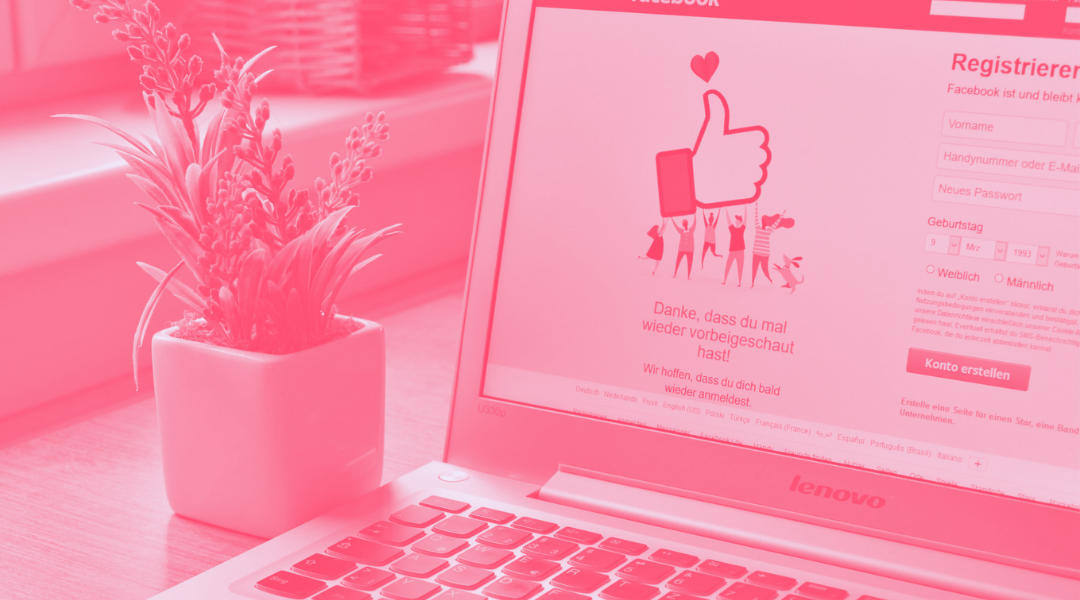Dynamic Ads for Lead Generation campaigns in Facebook
Starting from the beginning a lead is a user who has shown interest in your brand through an implemented marketing strategy. Generating leads or Lead...
Plan, activate and control media to hit targets with precision.
Turn data into smart decisions with advanced analytics and modeling.
Efficiency, governance and scale for agencies and teams.
![[Ebook] SEO + AI: eBook to Master AI Overviews and GEO](https://www.adsmurai.com/hubfs/MKT%20-%202025/WEB/Resources%20-%20Banners/HeaderEN_Ebook_SEO+AI.png)
[Ebook] SEO + AI: eBook to Master AI Overviews and GEO
Learn how to structure and distribute your content so generative models can understand it, trust it, and reuse it in their answers. A practical guide to compete and appear in AI Overviews and AI-powered assistants.
Discover more
If you are wondering how to generate leads through Facebook Ads, Lead Ads are here to make your life easier. Lead generation on Facebook helps your digital marketing strategy find custom ways to connect with people who are interested in your business. So, aren’t you leveraging your Facebook’s reach and optimization to generate quality leads?
Let’s introduce Facebook Lead Ads and get deeper into these campaigns to find out its potential to connect your brand with customers.
TABLE OF CONTENTS
98.5% of users access Facebook via mobile. These devices are no longer a trend but a fundamental part of our daily lives, indeed there’s no other device that can represent more consumer behavior. Consumers' transition to mobile has given advertisers an unprecedented opportunity to connect with consumers in a personal way that generates intent and interest.
These Facebook Ads turn out to be an easier ad type for brands to capture leads on the platform. In fact, Facebook Lead Ads are essentially mobile-friendly promoted forms that allow marketers to capture detailed information from users while offering opportunities to connect with brands. When a user clicks on a Facebook Lead Ad, a pop-up window appears inside the platform with pre-filled user data from their Facebook profile. The rest can be completed in a few taps. In most cases, the user just needs to confirm its data and gets automatically acquired as a new lead.
As we have just seen, Facebook Leads Ads is an advertising format that allows the exchange of information between customers and brands in an easier way. But, what other reasons should you bear in mind when considering these ads in your campaigns?
Massive and high converting social network: Facebook has one of the largest social media audiences in the world, with over 2.912 billion monthly active users.
Reach targeted prospects: Through Facebook audience targeting and optimization solutions, you can show your ads to users that have a higher probability of filling out your form. This makes your ads targeted to the prospects more likely to convert to customers.
Reduce the number of dropouts: With Facebook Lead Ads automatically filling out most of the contact forms, people are more likely to complete them. In that way you remove conversion friction by eliminating the need to redirect users to a landing page, helping you to increase your conversions.
Integrate your CRM with Facebook Lead Ads: This way, every time a lead provides their information, that information would go into the CRM and the lead would be contacted and its validity and usefulness would be rated.
Personalize your advert for potential customers: Optimize your ads for leads with custom features to quickly follow up or get higher quality leads: include personalized questions, use dynamic ads for lead generation, add a click-to-call option for your company, offer people the possibility to schedule appointments, etc.
Before starting the creation of your Facebook Lead Ad, you should review the questions you want to ask in the form, the Terms and Conditions for Customer Advertisements, and Facebook Advertising Policies. Also, check that you have the URL of your organization's privacy policy to include in the form.
From Facebook Ads Manager, click on Create a Campaign and look for the Lead Generation option.
Once you’ve chosen Lead Generation in the marketing objective selection menu, you can configure other campaign parameters such as name, A/B tests, and budget optimization.
Select a specific page to run your lead generation ad.
Remember that, unlike other campaign types, you cannot show lead ads to people under the age of 18. Tip: If you’ve previously run a Facebook ad campaign, you can use your saved audience or create a new one.
In this section, you can select between a carousel or a single image/video.
Related to lead ad size and other recommendations for Facebook Lead Ads:
File type: JPG or PNG
Image size: 1080 x 1080 pixels
Aspect ratio: 1:1
Main text: 125 characters
Title: 40 characters
Description: 30 characters
File type: MP4 or MOV
Length: up to 15 seconds
Aspect ratio: 4:5
Video: H.264 video compression, high profile preferably, square pixels, fixed frame rate, and progressive scan
Main text: 125 characters
Title: 40 characters
File type: JPG or PNG
Image size: 600 x 315 pixels / 600 x 600 pixels / 600 x 750 pixels
Aspect ratio: horizontal (1.91:1), square (1:1) or vertical (4:5)
Main text: 125 characters
Title: 40 characters
Description: 30 characters
Format: MP4 or MOV
Length: up to 15 seconds
Aspect ratio: 4:5
Video: H.264 video compression, high profile preferably, square pixels, fixed frame rate, and progressive scan
Main text: 125 characters
Title: 40 characters
Description: 30 characters
Now is the time to add your headline, body copy, and a call to action. Besides the copy, the most important part of the ad is the CTA. Facebook offers different options for this button depending on the type of your campaign. You can preview your ad at the window on the right as you create it.
The most important part is creating your form. The content creation process for the lead ads form is divided into five sections. Some of them are optional and others are there to enrich your form.
Form type: Choose between generating more leads or fewer leads although they will be of higher intent.
Intro: Add a headline to your form and a small paragraph.
Questions: This is all about what information you are going to ask your prospects to fill in. Choosing the right questions will get you more qualified leads and help you reach your business goals. Take a look at Meta Business Help Center for some questions examples based on different business goals.
Privacy Policy: It is required because you are collecting data.
Thank You Page: It will appear after the form is submitted. You can also include a call-to-action or download link here. It can play a major role in moving those leads down the sales funnel.
When everything is correctly set up, go to the top-right corner and click finish. You will be able to review your ad from Ads Manager and publish it when it is ready.
Let’s take a look at some of the best practices when you have to create a Facebook Lead Ad campaign that converts.
Connect your CRM to Facebook Lead Ads for Conversion Leads. In this way, you will be able to use its information about your leads to reach higher quality leads in your audience.
Keep an eye on audience overlapping. Don’t create different ads targeted at the same audience.
Use Facebook automatic placements to enhance your reach. In this way, you’ll be able to display your ads to more people across the platform.
Set up a lookalike audience from customers, not from prospects. If you get similar users in interests and demographics as your current customers, you’ll be showing your ads to a true profile of ideal customers.
Be clear in your offer and showcase your brand to build trust: in visuals, ad copies, and call to action.
Design concise forms. Start by communicating previously with your sales team and then include a few fields with the relevant information required to kickstart the journey of the lead through your sales funnel.
To optimize the answers in the form, reduce short answer questions due to the time required to be answered. Boost the multi-choice format with a limited number of answering options.
Use a context card (intro section) to give more details of the information the user will sign up for. It will appear as a pop-up after the user clicks on the ad.
To provide more credit for cars, Sufi (the brand created by Grupo Bancolombia focused on the sale of loans for cars, motorbikes, consumers, health, and education.) decided to launch a campaign of Facebook Lead Ads. To convey the message, Sufi used Dynamic Ads in multiple formats and created a Custom Audience.
It was a success on wheels! Achieving a total of 76% conversions, 931 completed contact forms, and a 48% reduction in the cost per completed form.

Starting from the beginning a lead is a user who has shown interest in your brand through an implemented marketing strategy. Generating leads or Lead...
![[Guide] How to create a Facebook Ads campaign step-by-step](https://www.adsmurai.com/hubfs/Gu%C3%ADa%20Facebook%20%20%281%29.jpg)
In a digital world where competition for user attention is ever increasing, Facebook Ads has become a key tool for businesses and entrepreneurs...

Facebook has approximately 3.03 billion monthly active users worldwide and at least more than 10 million monthly active advertisers that make life on...